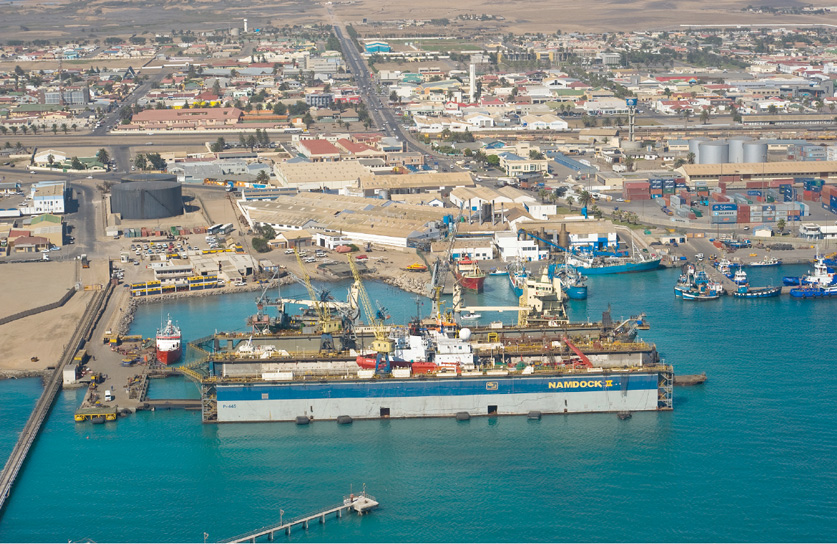Known to the early Portuguese mariners, and used by vessels from various nationalities over the years, Walvis Bay is a sheltered bay, ideal for harbour development. Germany took control of Süd-wes Afrika (now Namibia). Britain had occupied Walvis Bay and a small area surrounding it, and annexed Walvis Bay to the British-controlled Cape Colony in 1884. (The former British-controlled Cape Colony is now the South African provinces of Western Cape, Northern Cape and Eastern Cape.) Although some ships anchored off a small jetty at Swakopmund and off Lüderitzbucht (now Lüderitz), Walvis Bay became the only viable harbour on the desert coastline.
In 1915, South African forces took control of Süd-west Afrika as one of the first successes of the First World War. South Africa administered the territory, then known as South West Africa) and growth occurred as railway development occurred, opening a larger hinterland for Walvis Bay. Initially, dry cargo berths were used mainly by coasters bringing food and household goods from South African ports and loading fish products for the South African market. A few larger ships called, mainly to load copper ingots and concentrates from the mine at Tsumeb, and a range of general cargo from the territory passed through the port, while household goods and coal were imported for onward overland transport to the hinterland.
With a growing need for power generation at Windhoek and at the Tsumeb smelter, the volume of cargoes of coal discharged at the port increased accordingly. A bulk liquid berth was added, but, apart from its fishing activities, the port was relatively quiet until more cargoes arrived for the South African military activities in the northern part of the country, then known as South West Africa, and in Angola.
After a long war against the liberation forces headed by the South West African People’s Organisation, the territory gained independence in 1990.
The dry climate is ideal for the exploitation of salt pans, which provide salt for the food industry in southern Africa and for the South African chemical and armaments sectors, making another cargo – bagged or bulk salt – available for the coasters or chartered bulk carriers.
Since independence in 1990, the Namibian government has undertaken several large projects to swell the port’s capacity to serve the country’s expanding trade, and to expand the port’s role as an entrepot for southern Africa. It is linked to land-locked Botswana via the trans-Kalahari highway, allowing that country to export a significant portion of its products and import many of its requirements via Walvis Bay. Plans for a trans-Kalahari railway are also being considered, and if implemented, the existing coal terminal may also export coal from Botswana, which has millions of tons lying unexploited.
A container terminal that had been established in the late 1970s has been extended and further extensions will increase the ports role as an entrepot for the region. If the trans-Kalahari railway is built, Walvis Bay could become an important gateway for container traffic from North America and Europe to the Gauteng province of South Africa, cutting perhaps a week off the overall transit time if those containers were to be discharged in a South African port.
A growing ship repair sector – centred on three floating drydocks, with a fourth on order, and the possible construction of a large drydock – has taken a significant amount of repair work from Cape Town.
Further expansion of the port’s container capacity will enhance its role as a regional container hub port.

Three floating drydocks are the focal point of the important ship repair industry in Walvis Bay that has taken a significant number of ship maintenance contracts from its rival in Cape Town. Photograph : Namport

